There are over 600 horse breeds in the world today, some of which are sadly struggling to survive.
These rare horse breeds suffered a loss in population due to mechanization, war, and fall in popularity.
The rarest horse breeds in the world are the Sorraia, Nokota Horse, Galiceño, Dales Pony, and the Choctaw Indian Pony. There are less than 250 of each of these horse breeds globally, making them critically endangered.
Conservation efforts are currently ongoing to try and save these endangered horse breeds.
To help raise awareness about these unique horses, we have compiled a list below of the rarest horse breeds. Find out their history, uses, interesting facts, and estimated population.
Here are the twelve rarest horse breeds in the world.
1. Hackney
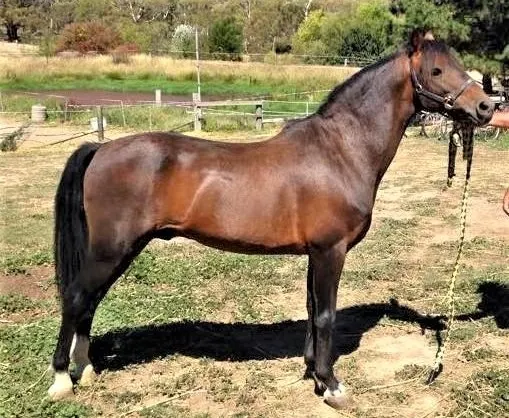
The Hackney is an elegant carriage horse with origins in Great Britain. Its ancestors include the Yorkshire and Norfolk Trotters, from which the breed inherited its quality gaits. The introduction of Thoroughbred blood in the late 18th century was the last step in creating the modern Hackney breed.
The Hackey’s characteristic high-stepping trot makes these horses ideal for carriage driving. Due to its impressive athleticism and stamina, the Hackney can trot at high speed for long periods.
The average height in the breed ranges from 15 to 16 hands, and the most common colors are bay, chestnut, brown, and black. Other than carriage driving, Hackneys make excellent riding and jumping horses.
Unfortunately, breed numbers have dropped to a critical level due to a decrease in popularity. The Livestock Conservancy estimates a worldwide population of 3,000, with most horses in England, around 200 in North America, and 300 in Argentina. However, due to a recent introduction of Thoroughbred bloodlines, the number of pure Hackney horses is under 300.
2. Gidran

The Gidran is a native Hungarian breed developed in the early 19th century. The breed’s founding stallion was a chestnut Arabian sire called Gidran Senior, who covered Thoroughbred, Holstein, Arabian and local mares. Only chestnut-colored foals were selected for the breeding program, which is why Gidran horses can only be chestnut.
These athletic horses are usually 15 to 16 hands tall and often have white markings. They are equally suitable for riding and driving and have achieved impressive results in competitive driving and show jumping disciplines.
The Gidran used to be popular before the Second World War, after which it nearly went extinct. Efforts to rebuild the breed resumed in 1975, when the purebred population consisted of 3 stallions and 16 mares.
There are currently 200 broodmares registered with the breed society, and numbers are slowly rising. Breeders and enthusiasts are working hard to promote this unique and talented sports horse in Hungary and beyond.
3. Cleveland Bay Horse

Liia Becker / Shutterstock.com
The Cleveland Bay is a rare horse breed dating back to 17th century England. As the name suggests, they are always bay in color. The breed was bred from the crossing of pack horses with Arabian, Thoroughbred, Andalusian, and Barb horses.
The Cleveland Bay typically stands around 16 hands and has short legs in relation to body size. They are a popular choice for driving and farm work and show jumping and fox hunting. The Cleveland Bay can also be found among the ancestors of several warmblood and draft horse breeds.
Similar to many other breeds, the numbers of Cleveland Bay horses have plummeted after the Second World War. Luckily, breed numbers began to increase again in the 1970s, thanks to the patronage of Queen Elizabeth II.
The breed still enjoys the protection of the Royal Family today, and Cleveland Bays are often used to pull carriages on royal occasions.
Several sources estimate the breed’s worldwide population to be under 900, with around 300 horses left in the United Kingdom. The Rare Breeds Survival Trust (RBST) and the Livestock Conservancy have assigned the Cleveland Bay “critical” status.
According to Horse and Hound, the Cleveland Bay was Britain’s most endangered native equine breed in 2018, with only 64 broodmares left in the country.
4. Choctaw Indian Pony
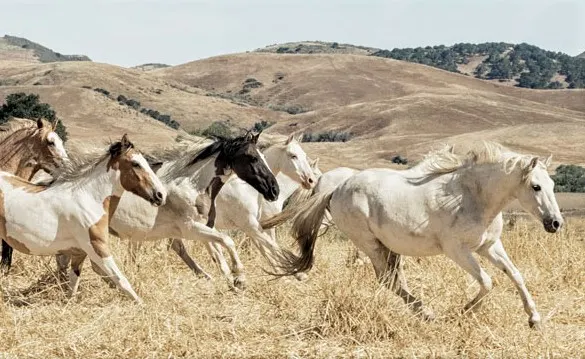
Developed by the Choctaw Native American tribe in Mississippi, United States, the Choctaw Pony symbolized wealth and glory. These small but sturdy horses could travel long distances and were invaluable to the Choctaw Nation.
The Choctaw Pony is no taller than 13.2 to 14.2 hands and often has pinto coloration. A straight head and abundant manes and tails are also characteristic of the breed. Their solid and resistant hooves enabled them to carry riders across rough terrain.
The Choctaw Ponies have excellent “cow sense” and do well in most Western disciplines. Their intelligence, agility and strength make them invaluable partners to cowboys on the range.
Unfortunately, most of the original Choctaw herd was eradicated by the US government. Today, only around 200 ponies remain, surviving in dedicated shelters such as Return to Freedom.
Several preservation programs have been launched to save the breed from disappearing from the face of the Earth.
5. Eriskay Pony
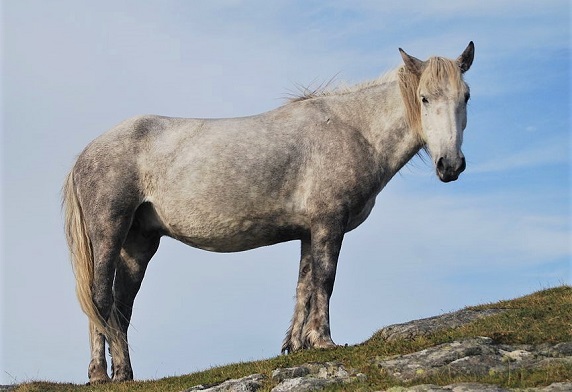
The Eriskay Pony is a small and rare horse breed from the Hebrides in Scotland. It developed in ancient times, likely from the Celtic and Norse horses brought to the islands by settlers, and even appears in Pictish imagery. Sadly, excessive crossbreeding with other ponies and horses pushed the breed to the brink of extinction.
Tough and hardy, the Eriskay Pony has a waterproof coat and often feeds on seaweed, especially in winter. They stand around 12-13 hands and are mostly gray, although bay and black versions also exist. Eriskay Ponies can be used for driving, light draft work, and as childrens’ ponies due to their friendly nature.
Today, only around 420 purebred Eriskay ponies exist in the world. Some sources consider their numbers to be below 300. In addition, a small population of 20 ponies still roams the remote Eriskay Island.
The RBST currently classes the Eriskay Pony as “critical”. Conservationists have been promoting the breed as an equine therapy pony, and numbers have been slowly creeping up as a result.
6. Suffolk Punch
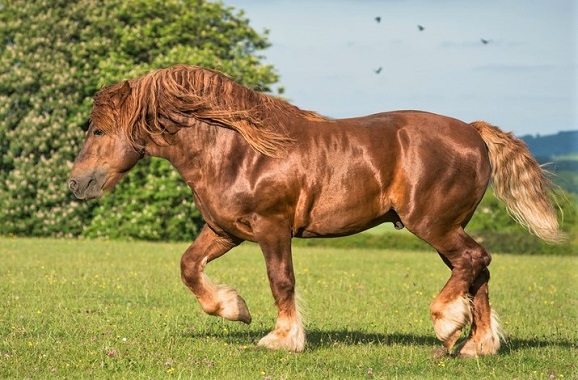
Nicole Ciscato / Shutterstock.com
The Suffolk Punch is a rare draft horse breed from Suffolk county in southeastern England. Dating back to the 16th century, these gentle giants changed little throughout history.
Included in our strongest horse breeds list, the Suffolk Punch was initially bred for agricultural use and became a popular workhorse during the early 20th century. The Suffolk Punch is an easy keeper with energetic gaits and is always chestnut in color.
During the World Wars, the Suffolk Punch pulled heavy artillery and non-motorized vehicles. Many horses perished during this time and the breed lost most of its uses due to widespread mechanization. Following the 1950s, the muscular and robust chestnut horses became a rare sight.
Today, around 600 Suffolk Punches remain in the United States and less than 300 in England. The breed appears as “critical” on the listings of the RBST and the American Livestock Breeds Conservancy.
A few horses still work in forestry and advertising, and conservation efforts are ongoing to save the breed.
7. American Cream Draft

Nancy Kennedy / Shutterstock.com
The only official draft horse breed from the United States that still exists, the American Cream Draft is barely 100 years old. Today, all members of the breed descend from a mare named Old Granny, foaled between 1900 and 1905 in Iowa.
While Old Granny’s breeding is unknown, she was a gold champagne mare with pink skin and amber eyes. Many of her foals inherited her coloration, which made them valuable.
Nowadays, the horses are mainly used for carriage and wagon rides, a tourist attraction in local villages.
It wasn’t until 1950 that the American Cream Draft was recognized as an official breed. Unfortunately, growing mechanization led to the breed’s steady decline, as happened to most draft horse breeds.
In 1982, the old American Cream Draft registry revived and began increasing breed numbers again. There are currently less than 400 draft horses registered with the society, and worldwide numbers are below 2,000. The breed is considered “critical” by the Equus Survival Trust and The Livestock Conservancy.
8. Dales Pony
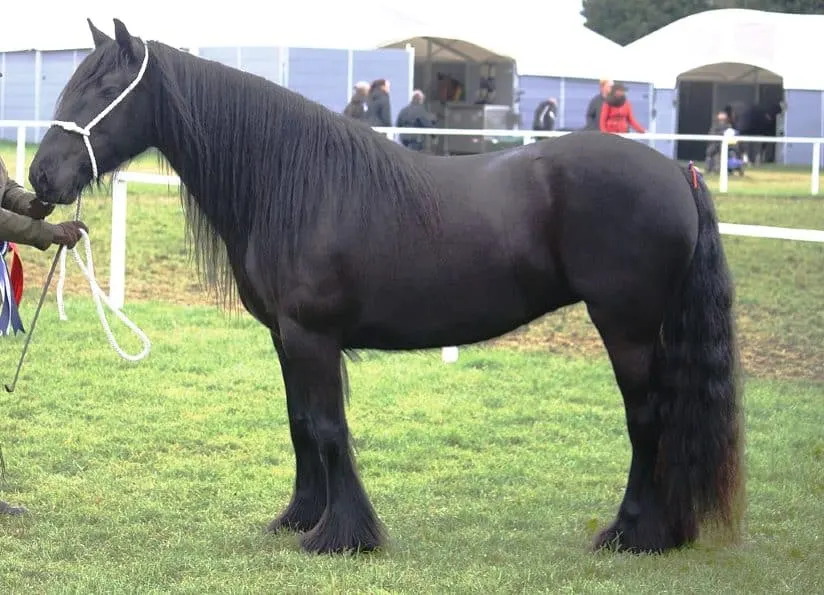
The Dales Pony is a native pony breed originating in England. Developed in the Pennine mountains of Derbyshire near the Scottish border, these ponies played a major role in the region’s led mining industry. They were also used for agriculture, transportation of goods, and riding.
The Dales Pony is predominantly black, but can also be found in brown, bay, gray, and roan colors. It has excellent conformation with a height of around 14 to 14.2 hands, and is a typical pony in both appearance and spirit.
A fast and elegant trotter, the Dales Pony is ideal for carriage driving. It also happily competes under saddle in almost any discipline, with a special talent for endurance riding.
Extensive crossbreeding with Clydesdales and Gypsy Vanners decreased the numbers of purebred ponies, as did their use in the Second World War. The Livestock Conservancy in the United States considers the breed “threatened”, meaning that less than 5,000 ponies remain worldwide and less than 1,000 are registered in the US each year.
In the United Kingdom, the RBST has given the breed “critical” status, which means fewer than 300 broodmares exist. Interestingly, a small feral herd of Dales Ponies still live free in the eastern Pennines. In 2007, there were around 30 feral broodmares living in the mountains. (Source: Wikipedia)
9. Newfoundland Pony
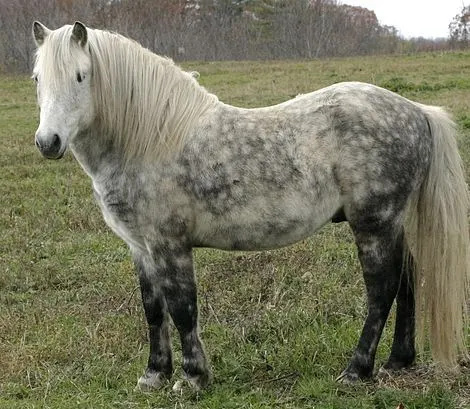
The Newfoundland Pony is a sturdy breed originating from English, Scottish, and Irish stock imported to Canada’s Newfoundland region. They have been used for various purposes over the centuries, including draft work.
Today, Newfoundland Ponies make excellent family and kids ponies and can be used for riding and driving. They range from 11 to 14.2 hands in height and can be almost any color.
In the second half of the 20th century, the breed almost disappeared due to slaughter and mechanization. The number of ponies drastically dropped from 12,000 in the 1970s to under 100 in the 1980s. The current population is estimated to be around 400, out of which only 250 can breed.
Fortunately, as of 1997, the breed is protected under the Heritage Animals Act of Newfoundland and Labrador. This law prohibits the transport of Newfoundland Ponies off their native island without permission for their export. It also assigns registering, promoting, and protecting the breed to the Newfoundland Pony Society.
10. Sorraia
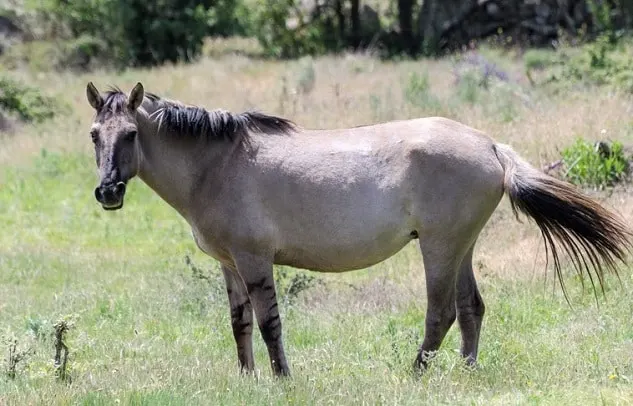
David Wieczorek / Shutterstock.com
The Sorraia is one of the rarest horse breeds globally with less than 200 horses in existence. Native to Portugal, these horses were virtually unknown until a zoologist discovered them in the early 20th century.
All Sorraias today descend from just 11-12 animals saved in 1930 and have gone through considerable inbreeding.
Some experts consider the Sorraia a direct descendant of primitive Iberian horses. While this theory is still debated, the breed does display primitive characteristics such as dun coloring with a dorsal linea and zebra leg markings and a convex profile.
Most of these small (14.1 to 14.3 hands) but hardy horses live in Portugal, but a small population exists in Germany. Traditionally used for herding bulls, these versatile horses do well both under saddle and in harness.
In 2007, less than 200 horses remained of this fabulous breed, including only 80 broodmares. The Food and Agriculture Organization (FDA) considers the breed “critical”, and numerous preservation projects have been launched to save the Sorraia from extinction. These projects led by European scientists focus on establishing herds to increase breed numbers.
11. Galiceño
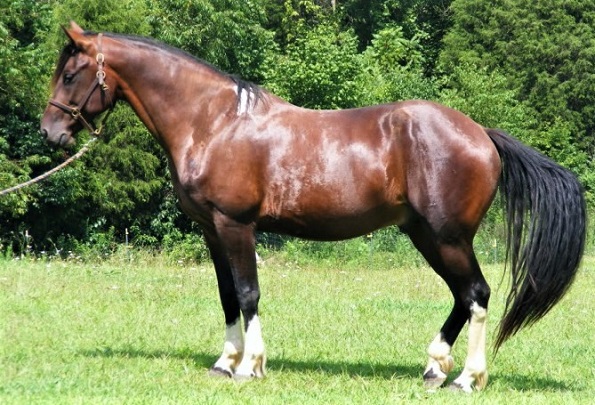
The Galiceño is a critically endangered Mexican horse breed. Its direct ancestors were the Spanish horses brought to the Americas by conquistadors in the 16th century.
This small horse breed only occurs in solid colors and is the perfect all-rounder. In its native country, the Galiceño serves as a riding, light draft, and packhorse. A considerable population exists in the United States, primarily used on Western events as kids’ competition horses.
As of 2013, the Galiceño horse is on the Livestock Conservancy’s Priority List in the “study” category, meaning further research is warranted into the breed’s genetics, history, and breed standards.
According to the Conservancy’s estimates, there are no more than 200-300 Galiceño horses left in the United States. However, the active breeding population is even lower and likely counts less than 100 animals.
12. Nokota Horse

Photo by Dana Boomer
The Nokota Horse is a semi-feral horse breed native to North Dakota in the United States. It originated in the 19th century when ranch horses were crossed with Spanish, Thoroughbred, harness, and other breeds.
Frequently blue roan, the Nokota Horse can often perform the “Indian shuffle”, a four-beat ambling gait. Two types of Nokota Horses differ slightly in appearance and height: the ranch and traditional type. The breed does exceptionally well in endurance and Western riding, but can also compete in English disciplines.
To increase grazing land for cattle, the Nokota Horse was nearly eradicated at the start of the 20th century. Luckily, a few horses were trapped inside the newly formed Theodore Roosevelt National Park in the 1940s and were thus saved.
However, the number of horses inside the park had to be regulated. Every year, the National Park Services makes sure no more than 70-110 horses live in the park, and excess animals are auctioned off.
While the exact population of Nokota Horses is not known, the Nokota Horse Conservancy lists the breed as rare and endangered.
Source: horseyhooves.com








